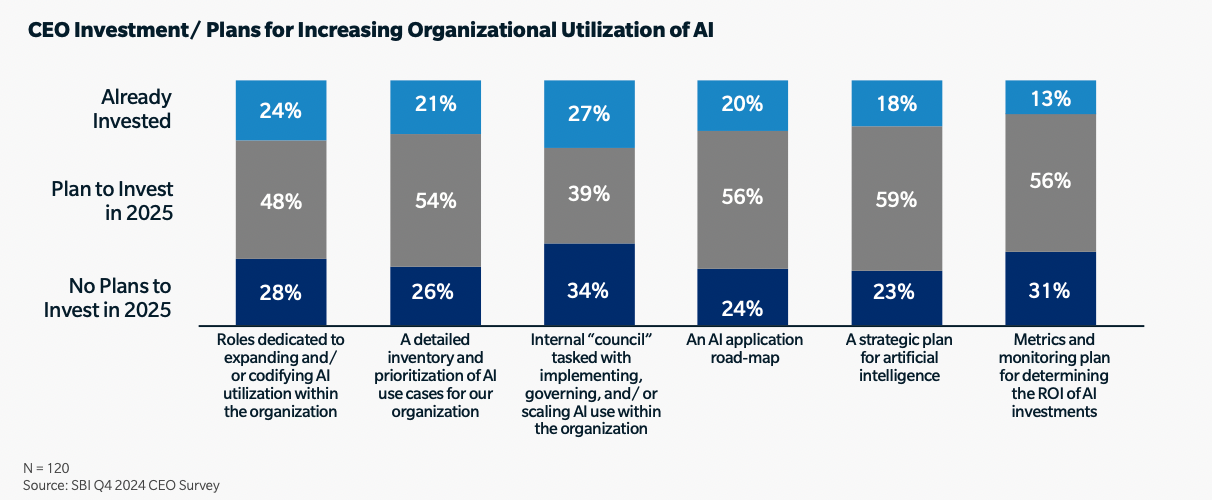CEOs are entering 2025 with cautious optimism. While many saw strong growth in 2024, they recognize that ongoing challenges in commercial efficiency and external risks could continue to weigh on performance. To address these concerns, CEOs are shifting their emphasis on artificial intelligence for operational improvements from an area of experimentation to a strategic necessity.
The results of SBI’s latest CEO Value Creation Pulse Report uncovered four key insights on how AI is shaping GTM strategies in 2025.
AI's Value Lies in Productivity Gains Over Cost Savings
More CEOs see productivity improvements as an area with high value-creation potential than for other outcomes, like enhanced decision-making or cost savings. Rather than implementing AI as a method to enable headcount decreases, most leaders expect AI-driven productivity gains to be reinvested into value-creating activities. However, headcount-related efficiency expectations are increasing, especially in customer success and sales roles where some CEOs anticipate a shift towards leaner teams.
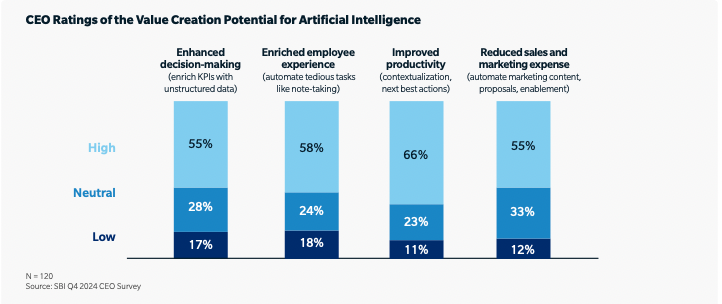
AI Adoption Has Been Slow, But Scaling Happens Fast
Despite AI’s potential, most CEOs report limited impact so far. Only 16- 23% have seen any kind of value creation impact, with the highest being in employee experience. This limited impact is likely due to the low adoption and scaling of AI in GTM activities to date.
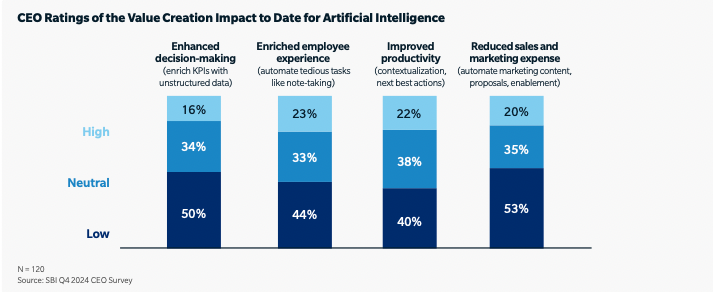
 Many organizations still remain in the exploratory phase, with over half having yet to implement any form of AI in sales, marketing, or customer success. For companies that have started scaling AI initiatives, progress is accelerating rapidly. In customer success alone, large-scale pilots and implementation grew from 0% of CEOs having any in place in Q1 of 2024 to 26% in Q4. Once organizations begin to make use of AI in their go-to-market activities, it gains traction and scales quickly.
Many organizations still remain in the exploratory phase, with over half having yet to implement any form of AI in sales, marketing, or customer success. For companies that have started scaling AI initiatives, progress is accelerating rapidly. In customer success alone, large-scale pilots and implementation grew from 0% of CEOs having any in place in Q1 of 2024 to 26% in Q4. Once organizations begin to make use of AI in their go-to-market activities, it gains traction and scales quickly.
Barriers to AI Adoption
Of the nine we surveyed, two major constraints stood out as primary barriers preventing broader AI adoption.
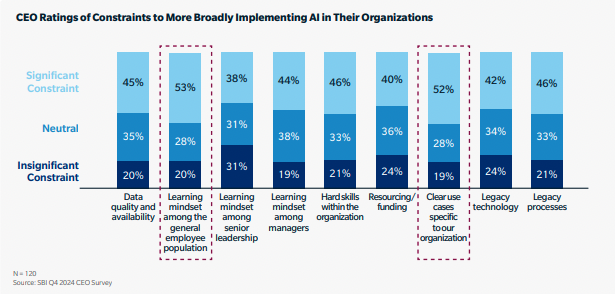
- 53% of CEOs cite a lack of a learning mindset among the general employee population as a challenge. While this is a valid concern, many benefits of AI, like enhanced decision making, can be achieved without widespread behavioral shifts as they rely more on back-end data optimization.
- 52% of CEOs struggle to identify clear, proven use cases that justify investment in AI. Greater confidence in AI’s ability to drive measurable returns is often required before CEOs commit significant resources.
CEOs Are Moving from AI Ideas to Strategic Execution
The era of AI experimentation is coming to an end. Nearly 60% of CEOs plan to develop a formal AI strategy in 2025, with structured roadmaps and ROI metrics. The focus is shifting away from internal AI councils to more actionable, programmatic methods of adoption.
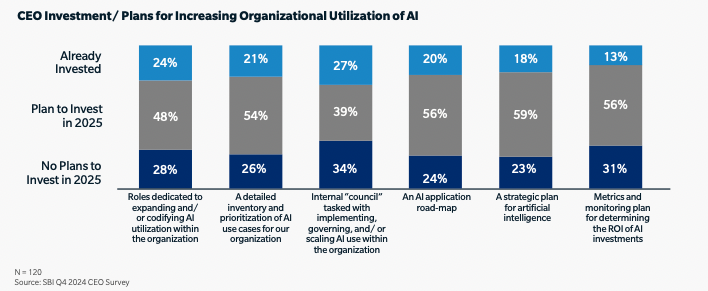
Companies that have already implemented structured AI initiatives were over 20% more likely to exceed their growth targets in 2024. Interestingly, those that established dedicated AI-focused roles saw an even greater performance advantage.
What Should CEOs Do Next?
- Move Beyond Experimentation: AI adoption remains low across many GTM functions. Now is the time to identify high-friction areas where AI’s impact will be clear and significant.
- Strengthen Your Data Infrastructure: AI is only as effective as the data it relies on. The more data available, the better the results will be from using artificial intelligence. This is true when it comes to using large language models, for example, as a tool for sellers to understand their accounts, product specifications, or sales process. It is even more true when it comes to predictive analytics support and other decision support that turn AI into a value multiplier for the enterprise.
- Optimize Your Tech Stack: Many organizations struggle with redundant and underutilized technology. Audit and streamline existing tools to make AI adoption more efficient and cost-effective.
- Train Teams for Real-World AI Application: AI-driven productivity gains require effective training. Rather than providing theoretical overviews, focus on hands-on learning with real-world application. Sales and marketing teams should engage in practical AI exercises and leverage 1:1 coaching and peer coaching to drive adoption.
View the full CEO Value Creation Pulse Report.
